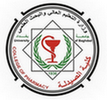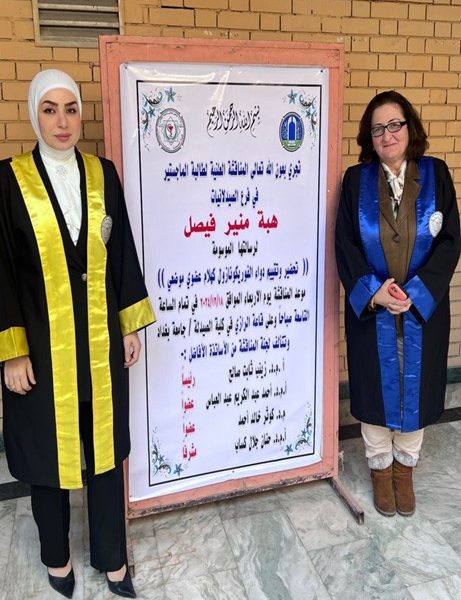The College of Pharmacy discussed the MSc thesis entitled “Preparation and Evaluation of Voriconazole as Topical Organogel” by the student Hiba Muneer Fysal and the supervisor, Associate. Prof. Dr. Hanan Jalal Kassab, at the Pharmaceutics Department. The study aimed to prepare and characterize a topical organogel of voriconazole to avoid unwanted systemic side effects. Additionally, the formulation was designed to avoid primary metabolism, improve patient acceptance, provide an alternative for patients with nausea, and reduce the required dose by enabling direct contact with the affected site.The study included an evaluation of the drug’s solubility in a range of oils, and the gel-forming concentrations were determined according to the minimum gelation concentration. Subsequently, the topical organogel of voriconazole was formulated by combining low molecular weight organogelator (Span 60, stearic acid, palmitic acid) in various concentrations with different oils (oleic acid oil, grape seed oil, sesame oil) using the mixing method with continuous stirring for 40 minutes at 85 °C. The formulations were then prepared and evaluated based on their physical appearance, spreadability, oil-biding capacity, gel-solution transition temperature, microscopic imaging, viscosity, pH, in vitro drug release, antifungal activity, texture analysis, attenuated total reflectance Fourier-transform infrared spectroscopy (ATR-FTIR), transmission electron microscopy study, skin irritation test, and histological examination.The results showed that all prepared formulations exhibited acceptable physical properties, pH, good drug content, fiber aggregation, and transition temperatures. All formulations were thermally reversible. The oil-binding capacity and spreadability of the organogel were dependent on the concentration of the organogelator. Viscosity studies revealed pseudo-plastic shear-thinning behavior, while the in vitro drug release study demonstrated sustained release behavior. The absence of additional signal in FTIR spectra indicated no interactions between voriconazole and the excipients. Palmitic acid with grape seed oil and Span 60 with sesame oil, at the minimum gelation concentration, were selected as the optimal formulation, as they demonstrated good spreadability, high oil-binding capacity, and 100% voriconazole release after 8 hours. The formulation also showed acceptable consistency and adhesion for topical skin application, along with good antifungal activity against Candida albicans. Transmission electron microscopy (TEM) analysis of the organogel showed nanostructures undergoing self-assembly to form structures. The organogel was non-irritating to the skin, as compared to formalin, with normal histological examination results. No changes were observed in the physical and chemical properties of the voriconazole organogel after 3 months of storage. The study recommended that the preparation of the 1% voriconazole topical organogel was successful and has the potential to avoid the central side effects of the drug, as it demonstrated acceptable properties for topical use by the patients.



